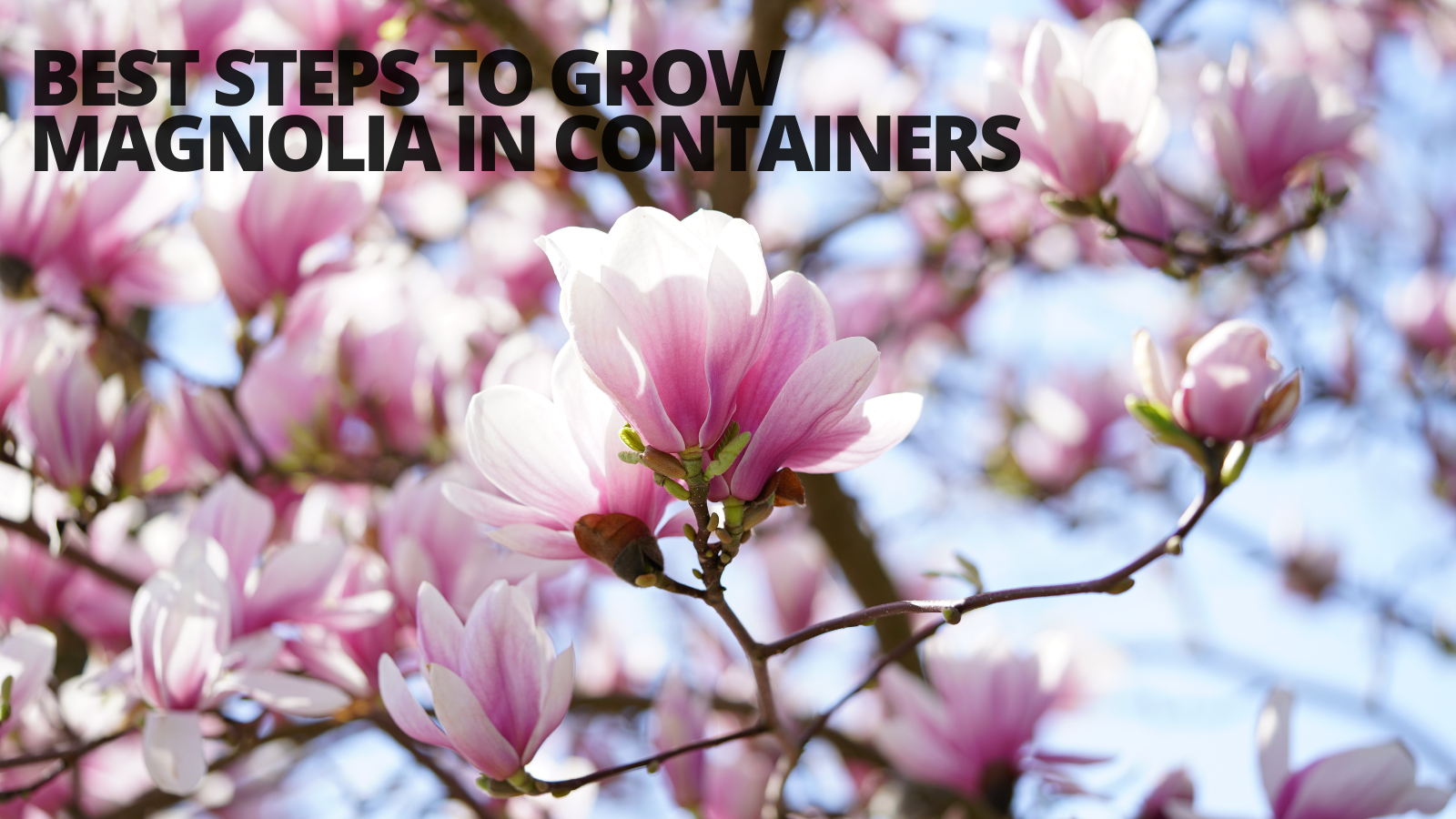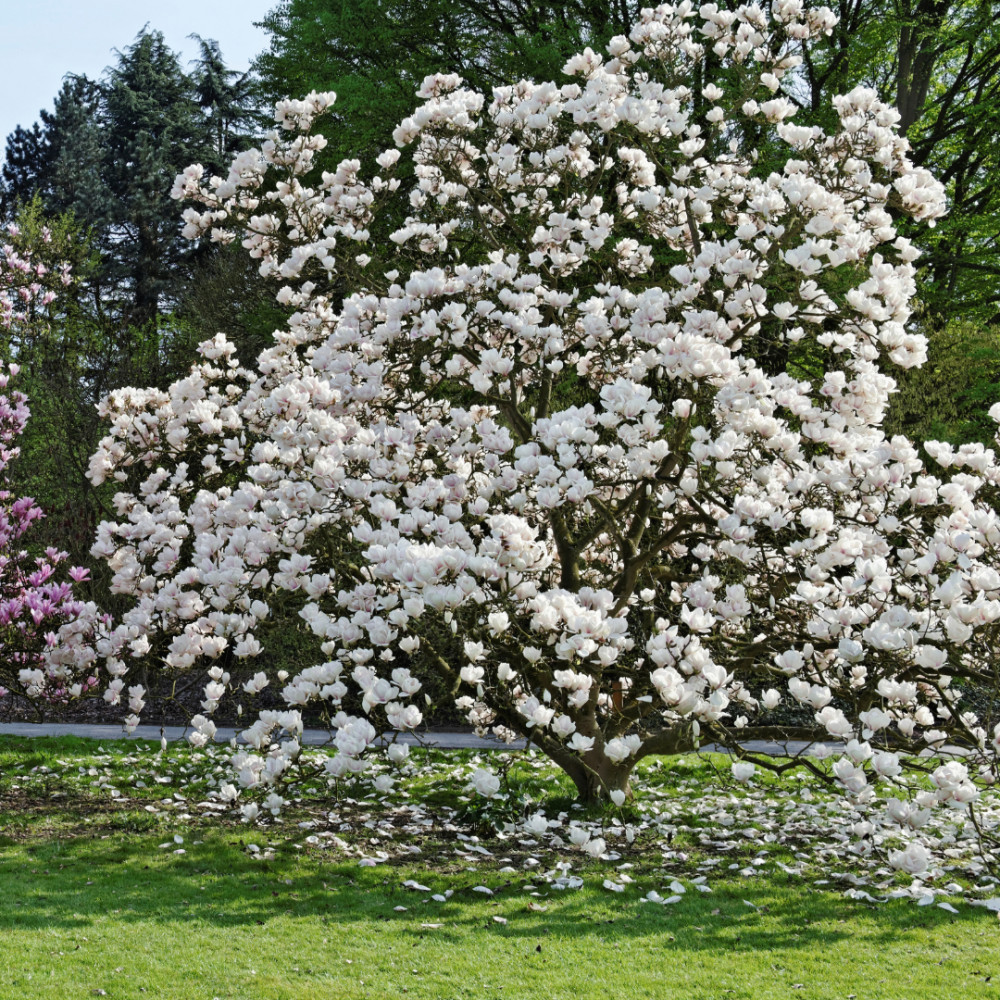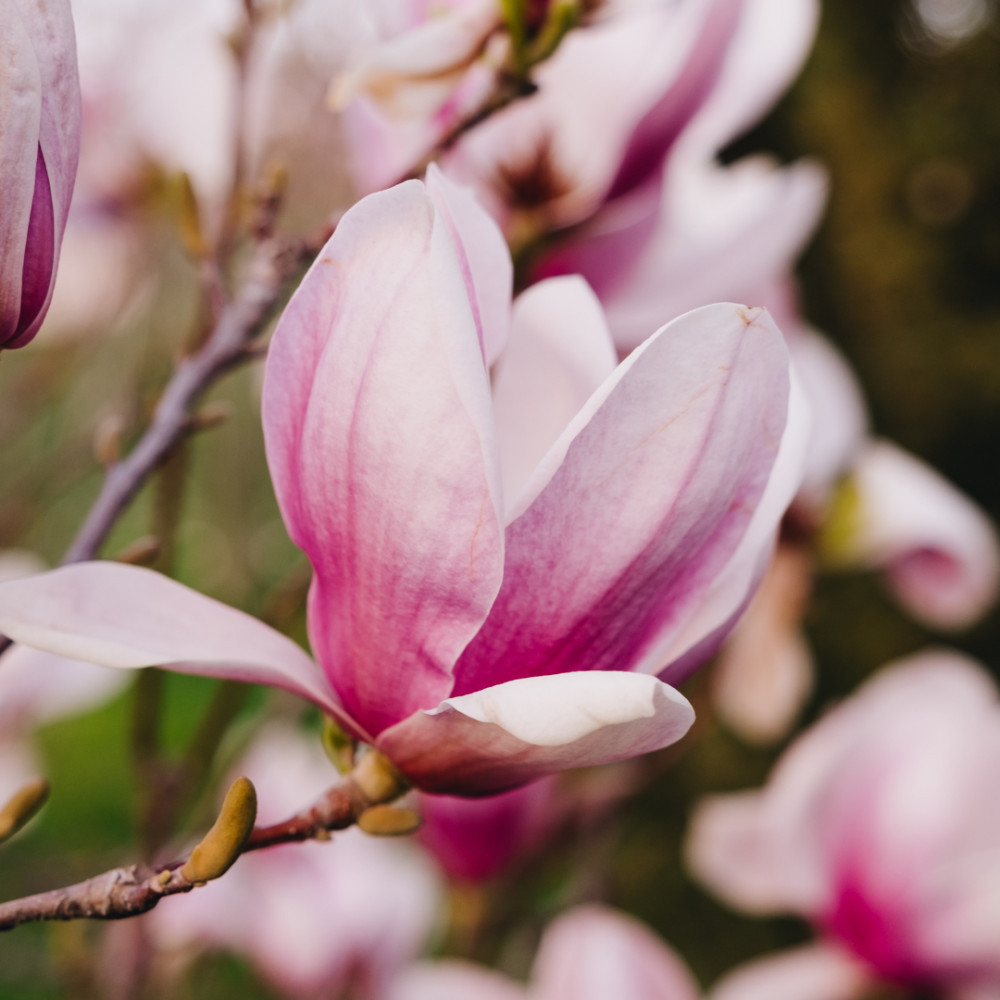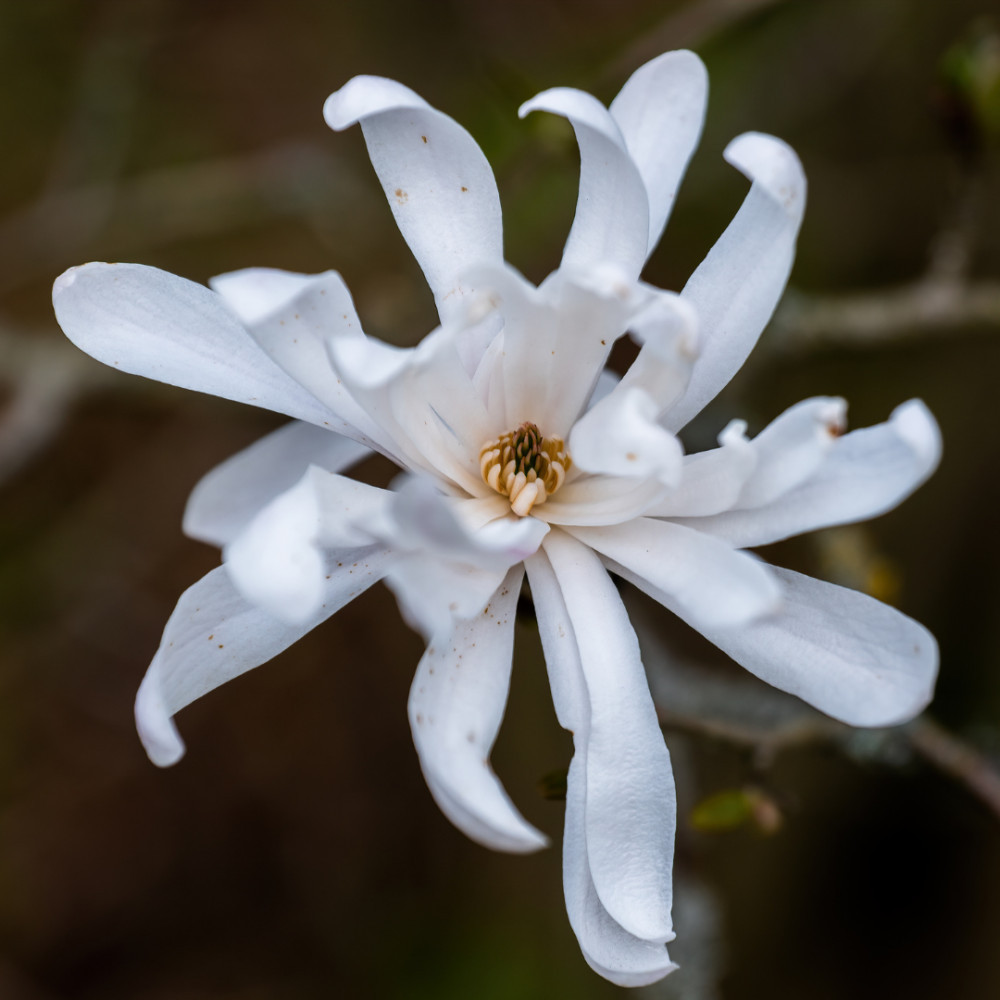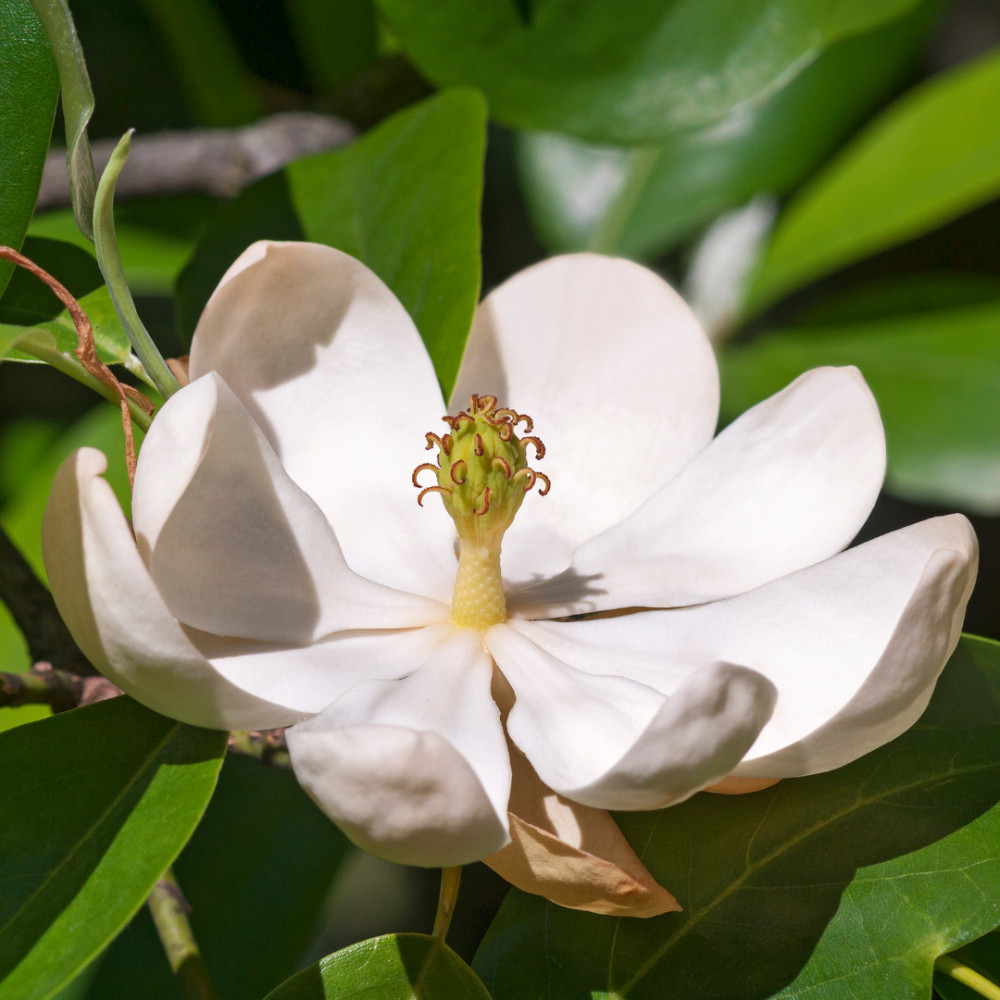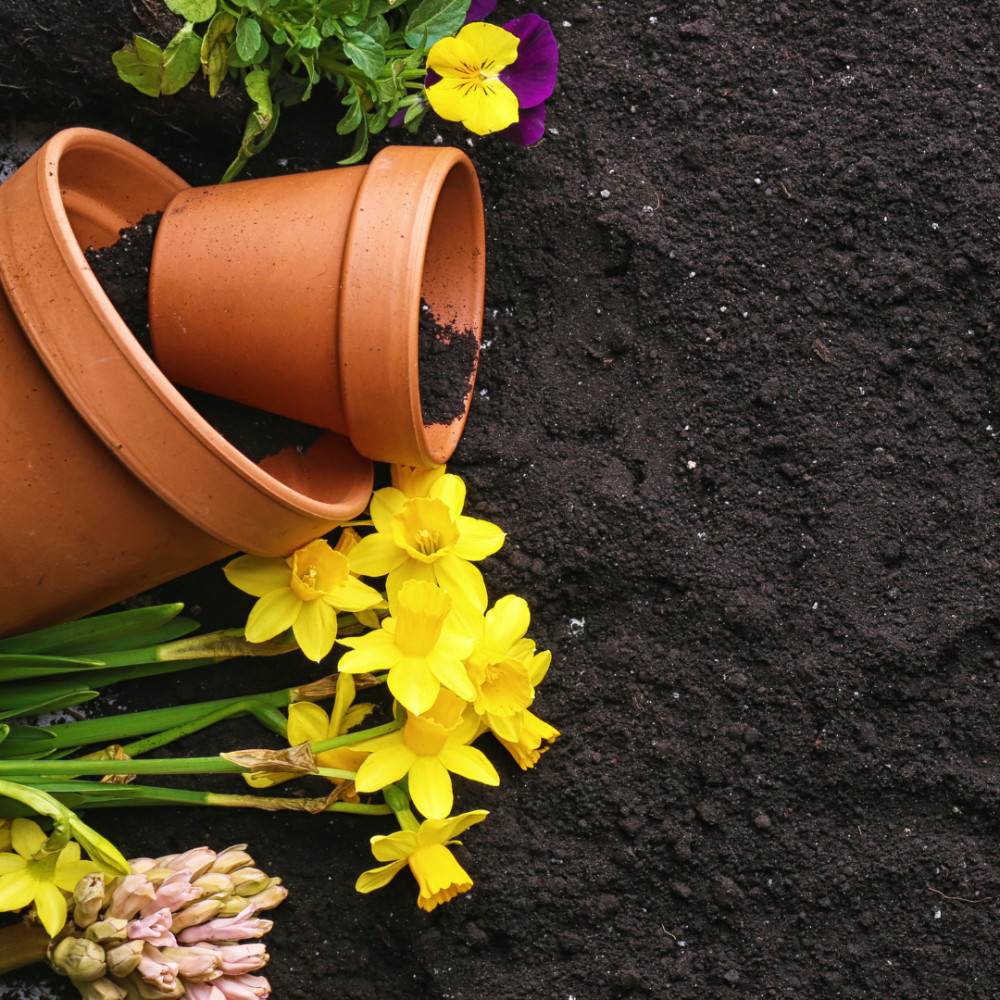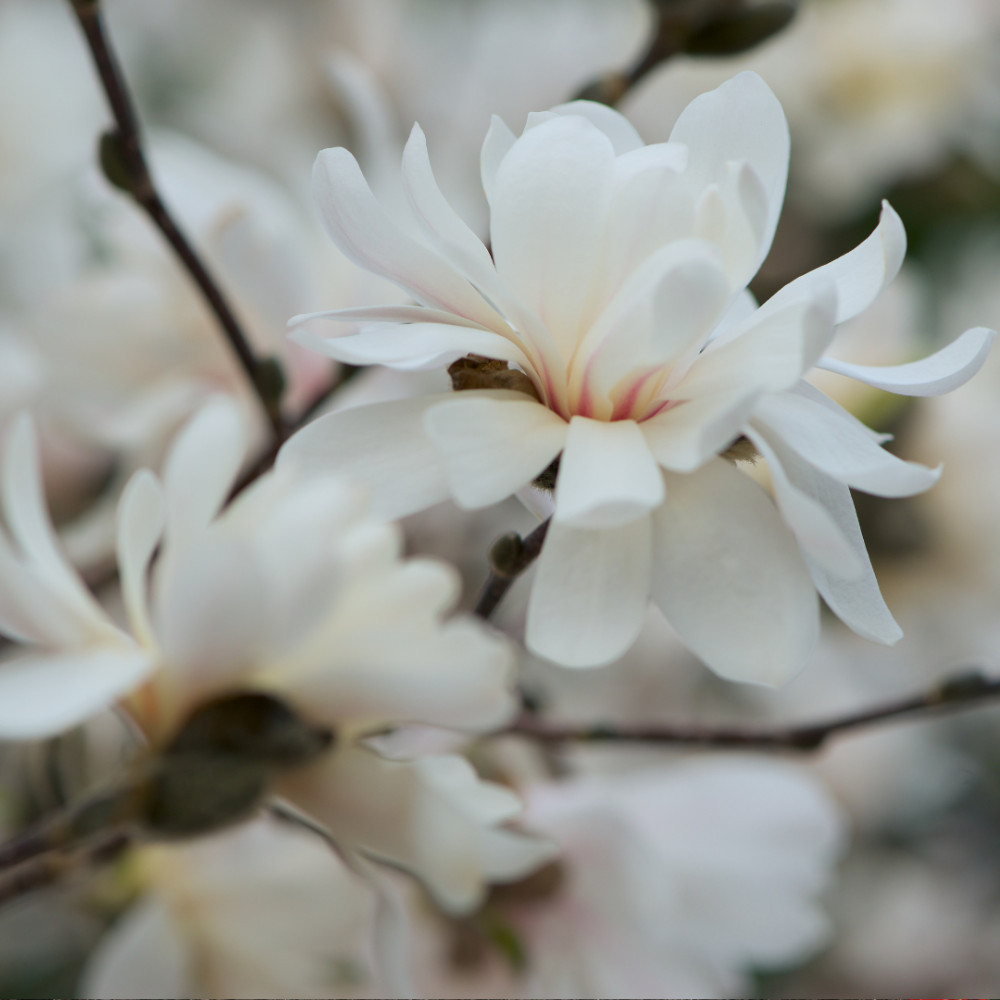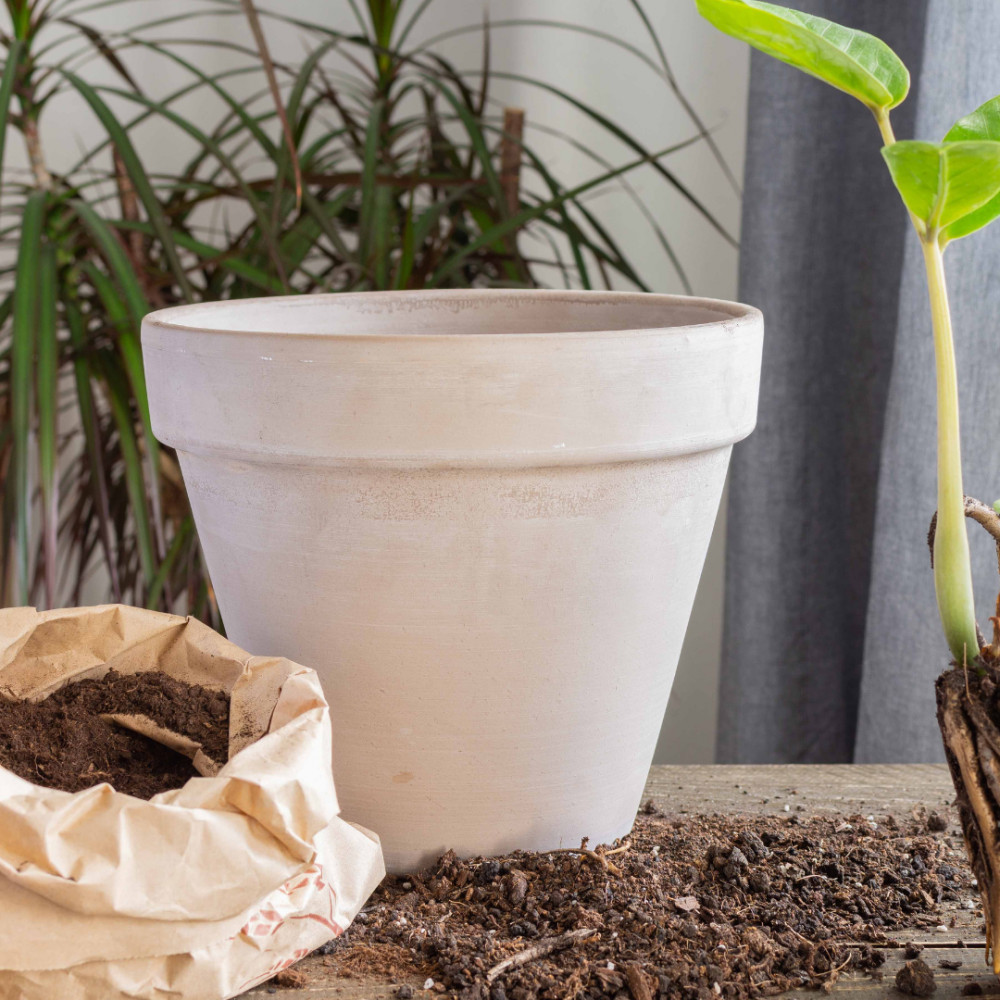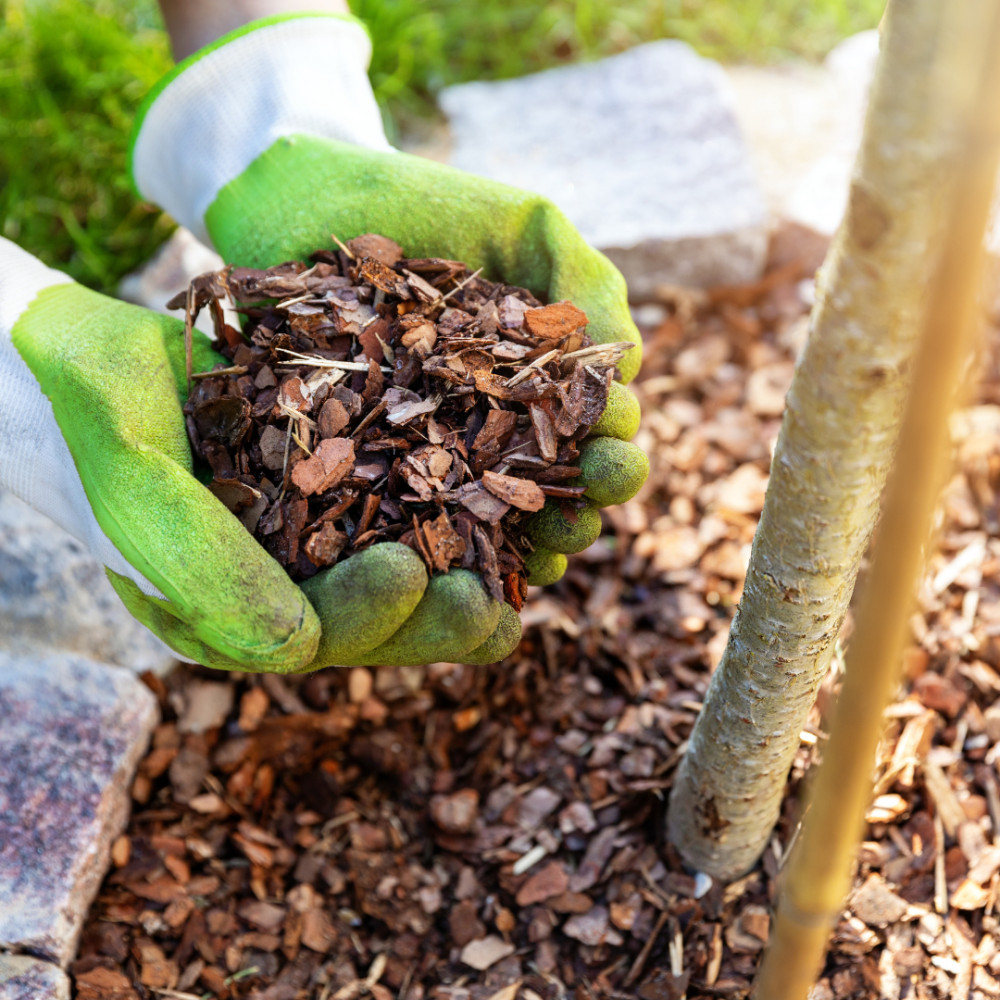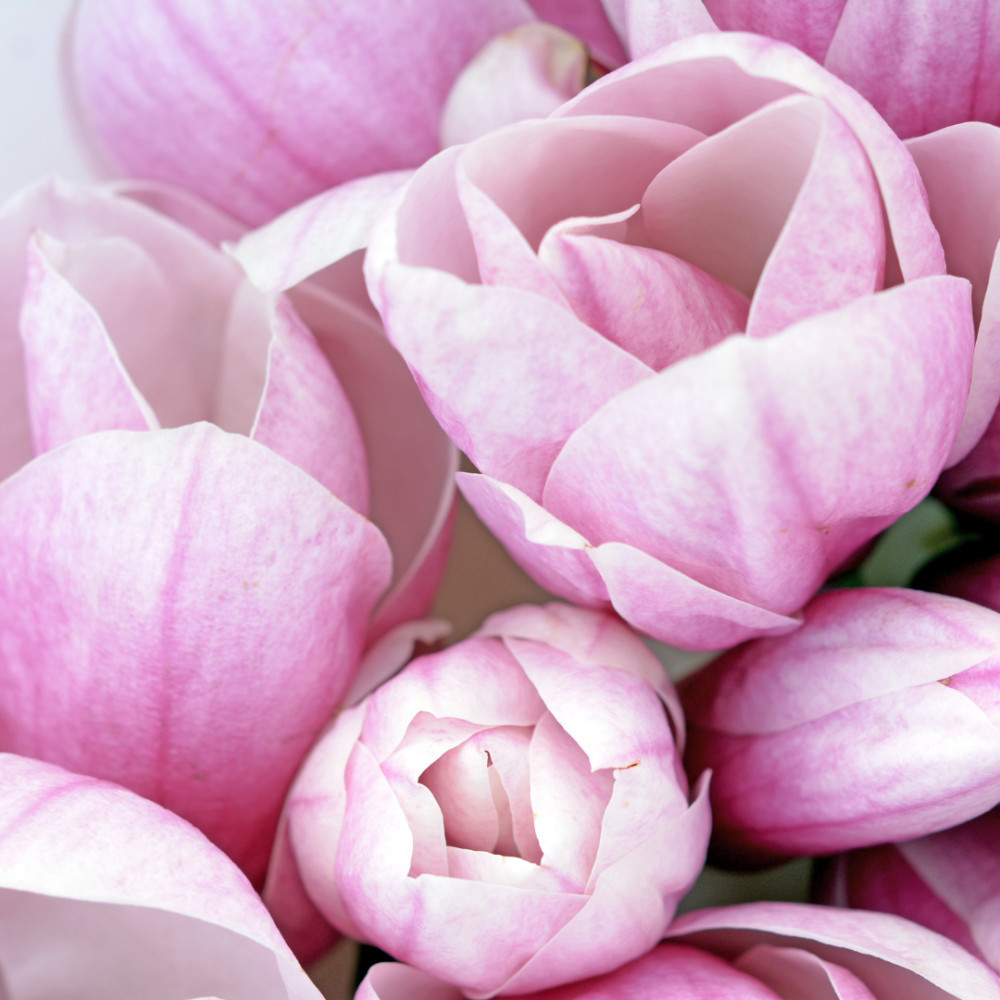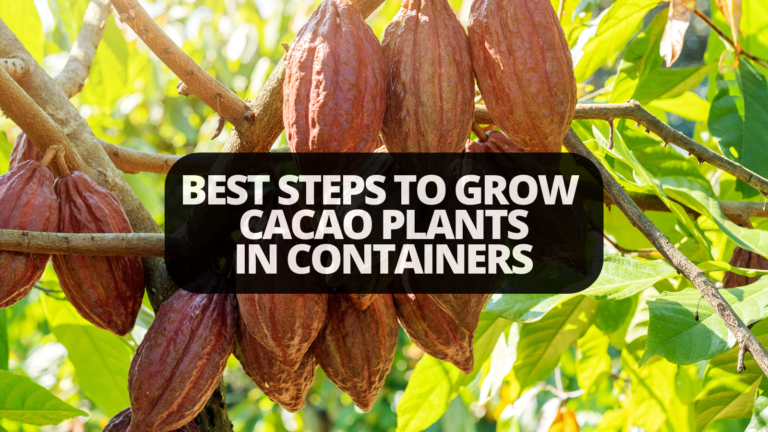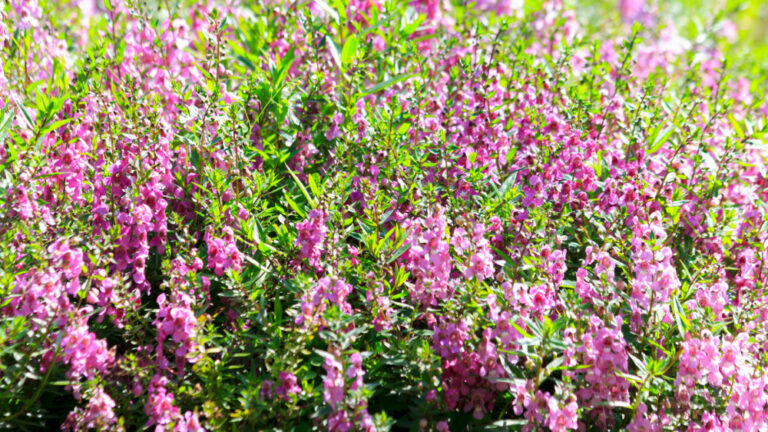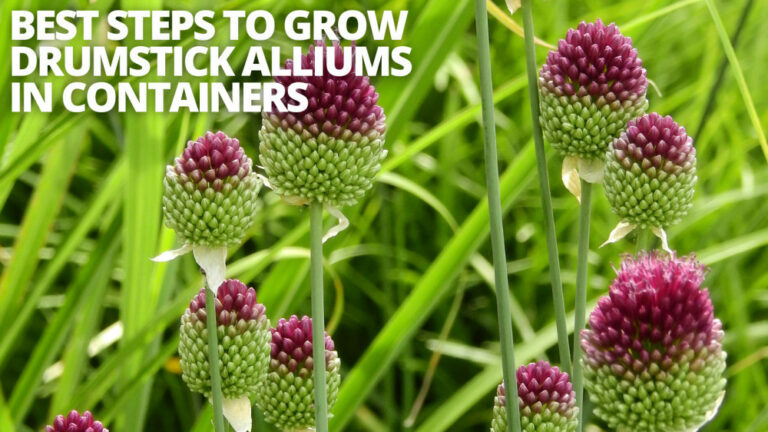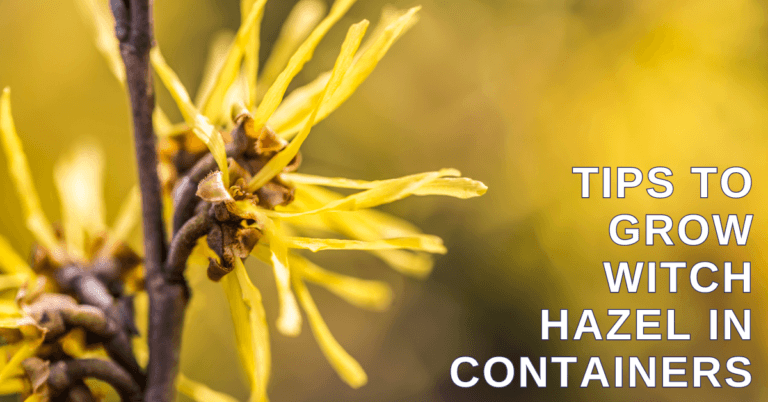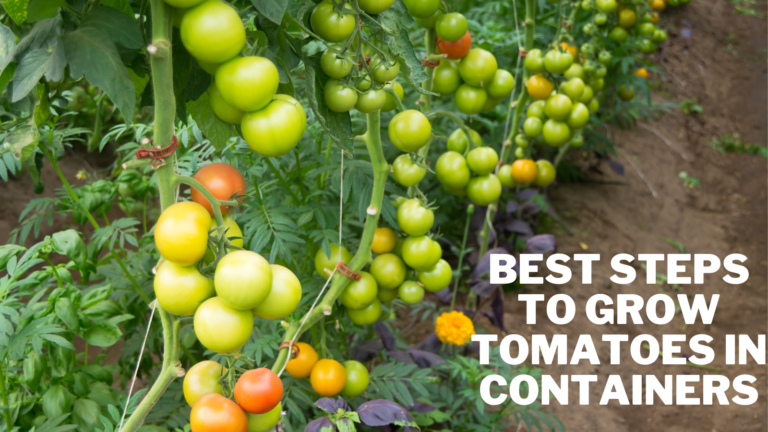Best Steps To Grow Magnolia In Containers
Best Steps To Grow Magnolia In Containers
Is it possible to cultivate magnolias in containers? Which magnolia trees are suitable for container growth? Yes, a magnolia tree can be planted and grown in a pot.
The dwarf magnolia cultivars are simple to grow in pots. However, if cultivated in a massive pot with a drainage hole at the bottom, the standard magnolia can also be grown in pots.
Magnolias are shrubs that bloom with exquisite beauty. They come in deciduous and evergreen varieties.
The leaves of the evergreen magnolia are dark green and leathery on one side and brownish on the other.
The deciduous magnolias produce lovely blossoms but lose all their leaves in the winter. In this blog, you will learn how to grow magnolia in containers.
History & Origin Of Magnolia
However, magnolias are among the most primitive plants in evolution, and fossil evidence suggests that they originally inhabited Europe, North America, and Asia more than 100 million years ago.
Currently, only Southern China and Southern America are home to these people. About half of the approximately 80 species of magnolia are tropical.
Magnolia is the largest genus in the family of Magnoliaceae. However, there are nine additional related genera, including Liriodendron, which has just one species; Michelia, which has 45 species; and Manglietia (25 species).
The first literary mentions of magnolias often speak of their alleged therapeutic benefits.
Anyone who has experienced the strange aroma of magnolia sap will know how seductive it is and how likely it is to appeal to individuals in the medical field.
In Asia, the bloom buds of the Magnolia salicifolia are used to alleviate allergies and headaches.
The possible application of this medication in managing cancer is discussed in a 1985 study.
Another recent study discovered that Parkinson's disease patients' tremor is reduced by tonics made from Magnolia Officinalis bark. Who knows what might still be found?
Primitive wingless beetles pollinate magnolia trees in their natural habitat. Flowers pollinated by beetles are distinguished by their huge size, white or pink colour, absence of nectar, and a profusion of pollen.
Beetles eat pollen; although most magnolias have a fragrant aroma, they rarely have nectar. Due to their ancient look, beetles predate winged insects by many millions of years.
Most spring-flowering magnolias bloom in our climate before many insects emerge in the early summer, which is why many species rarely, if ever, set seed.
This results in an intriguing spectacle where the stands of Magnolia campbellii are predominately white in some regions of China.
Magnolia campbellii is predominately pink in Europe, where beetles do not occur, and wind or insect pollination is a reality. Wilson and Forrest note that locals used white-flowered trees as firewood in the wild.
The white campbellii is prized as unique in the West. This may have just as much to do with genetics as bugs, but it does demonstrate how primitive and different magnolias are from other plants.
Types Of Magnolia
Magnolias are stunning floral trees. About 210 distinct species and variants exist. They were originally from North America and Southeast Asia but have since become citizens of practically every continent.
They are available in various sizes, bloom colours, and shapes. Usually, they flower from April through June.
Those plants make most of the plants that make bees' happy pollinating lives possible. Ideally, you should know about the best varieties to grow magnolia in containers.
1. Southern Magnolia
The Southern Magnolia (Magnolia grandiflora) is arguably the most recognizable among all magnolia trees.
This plant can reach heights of 40 to 80 feet, and its canopy can extend to 40 to 50 feet. It has glossy, deep green leaves that appear evergreen (though they do drop in cold weather). This plant needs a position with full sun and can grow outside in zones 7-9.
2. Chinese Magnolia
The Chinese Magnolia is an extremely well-liked and gracefully spreading tree (Magnolia x soulangeana). It blooms with an abundance of white and pink blossoms early to mid-spring.
These flowers are exceptionally fragrant in addition to stunning. Early in the spring, the leaves appear on bare branches after the blossoms.
This tree prefers full to partial light and may grow in zones 6 through 9. It prefers damp, drained soil and is a significant bird and butterfly magnet.
3. Star Magnolia
You can avoid worrying about a late frost by planting a Star Magnolia (Magnolia stellata), a Magnolia tree that blooms later.
This slower-growing tree reaches a height of 10 to 20 feet and has an 8 to 15-foot canopy. It is adaptable as a shrub, grows in zones 4 to 8, and requires little maintenance.
When planted in a row, they look adorable because they blossom magnificently.
This magnolia is delivered in gallon containers 1-2 feet tall, with soilless media and a 9-month slow-release fertilizer. Only transplant to the ground, never into another container!
If the accompanying planting instructions are followed, the plant will be successfully transplanted for 30 days as long as the proper place and water are used.
Under the same conditions, deciduous plants purchased dormant in the winter are guaranteed to leaf out in the spring.
4. Sweetbay Magnolia
Magnolia virginiana, often known as the Sweetbay Magnolia, is a stunning, dense shade tree that produces masses of creamy white blossoms in the spring.
Usually, these blossoms appear in late spring or early summer. One of the magnolia trees with the best pest resistance is this one. It can endure extremely damp soils and even endure some standing water.
It thrives in zones 5–10, grows to a height of 30–50 feet, and has a 20–25 foot canopy for maximum growth and blooming. Plant it in full light.
Grow Magnolia In Containers
An excellent choice when seeking the perfect show-stopping tree is a magnolia. Several smaller cultivars have a 20-foot height limit, although common magnolia variants can grow up to 80 feet tall.
This indicates that it is possible to grow them in a container that can be relocated to meet the needs of your space and your tree.
Choosing A Container
The container itself should be considered when growing a magnolia in a container. Choose a container slightly more significant than the tree's root ball if it serves as a temporary home for the tree before you plant it in the ground.
However, if you wish to keep your tree in a pot permanently, you should place your young tree in a much bigger container than the tree's root ball.
Just remember that you might need to relocate the container, so make sure it's light and reasonable in size.
Before adding soil, position the container on a rolling plant caddy if you anticipate moving the tree frequently.
Above all else, be sure the container you purchase has adequate drainage. The roots will receive enough air and water if the bottom of the container is lined with pot shards, rocks, or a coating of pearlite.
Soil To Grow Magnolia In Containers
You should pick a compost suitable for ericaceous plants like Rhododendrons or Azaleas because magnolias like slightly acidic soil.
A John Innes ericaceous compost is an example of an ericaceous combination that is loam-based and highly acidic.
If necessary, they will also grow in regular compost. However, soil-based compost is usually preferable because it helps plants retain moisture, and the weight prevents them from being blown over.
Watering
Magnolias take little care when grown in pots. Giving them a consistent water supply is the first thing you should do, but never give them too much.
Always watch for dry soil because if you have two or three days of sunny weather and neglect to water them, it might lead to some damage.
Ask someone to water your magnolias if you are on vacation. If that isn't possible, relocate them to a cooler, shadier spot while you are away, and if at all possible, consider installing a water timer on an outside faucet.
Sunlight
Put the container somewhere where it will receive full sun and some shade. With enough sunlight, blossoming is at its peak.
But if you see that your tree is wilting in a hot, bright position, transfer it to a little bit of shade. Water is often used for the first few months to keep the soil moist but not saturated.
Location To Plant Magnolias
The ideal soil conditions for magnolias are full sun, fertile, well-drained, slightly acidic soil.
Because frost can harm the blooms, pick a protected area, not in a low-lying frost pocket, choose a kind that blooms later if you reside in a cold region of the country.
Because certain magnolias can get rather big, keep in mind the final height and spread of the tree and ensure you have space for it.
Choose a tiny magnolia tree if you are concerned about growing one close to your home. Grow Magnolia grandiflora or Magnolia delavayi if your soil is alkaline.
Fertilizer
Magnolias usually need mulch and no other food when cultivated in the ground. However, some additional liquid feed may be beneficial while growing pot plants.
Early spring-feeding container-grown magnolias with a liquid feed substantial in phosphorus and potassium can boost healthy development and more prolific blossoming.
Transplanting
Magnolias can be challenging to move from one pot to another if you don't know what you're doing. Moving magnolias from one container to another might be difficult.
Since the roots are essential for the plant to re-establish itself and start strong, the root ball should ideally not be damaged.
I don't know what you're doing. The root ball should ideally not be harmed because the roots are crucial for the plant to re-establish itself and get off to a strong start.
After locating an appropriate container, it is now time to transplant. Before relocating the tree into a new container, it is best practice to stop watering it for around three days.
This is because compact dirt surrounding the root ball is easier to manage than damp soil.
Make sure the top roots of the plant are placed so that they are just below the soil line, i.e., at the same level as when it was first planted.
Mulching & Pruning
Mulching is crucial because it helps the tree retain moisture and regulates the temperature of the roots.
When adding new mulch, avoid touching the bark; this may need removing the mulch from the previous season.
This is necessary to prevent diseases and pests from having a place to grow without ventilation.
Pruning removes dead or whippy branches and keeps the tree's shape. In the spring, prune your evergreen magnolias, and in the late summer, the deciduous types. Pruning is typically done sparingly.
Winter Care
The likelihood of frost damage increases for magnolias growing in containers. I advise relocating them for the winter to a shady location with some protection, possibly up against a wall.
To further insulate the roots and little, I also advise enclosing the pot in bubble wrap or sacking.
Additionally, you can purchase a fleece jacket or wrap the plant in fleece. Remove the fabric jacket in the morning when the temperature is more agreeable to allow the plant to work correctly.
You might leave it there during the winter if you have a cold greenhouse; keep an eye on it occasionally to see if it needs watering and give it some if the soil is dry.
Propagation
Magnolia trees can be propagated in several methods. You can do this using seed, clonal propagation using softwood cuttings, air layering, bench grafting, whip grafting, chip budding, or summer chip budding.
Propagation By Softwood Cuttings
Cut the newly sprouting branches into 6- to 8-inch lengths. As soon as you cut them off, put them in a partially with water filled jar to prevent drying out.
Remove all the leaves from the cuttings other than the two at the tip to prepare them for roots. Cut a portion of the leaf if it is too big.
Use a plastic container 10 to 12 inches deep to create the rooting bed, which is deep enough to hold the cuttings.
The plastic container's bottom should include drainage holes filled with rooting material. Coarse sand, one-third peat, and one-third vermiculite, peat and vermiculate mixture, or coarse sand, might be used as the rooting medium.
Create holes in the medium-large enough to hold the cuttings with a pencil or stick. Dip the cuttings into Indol-3-butyric hormone, called Rootone, TakeRoot, FastRoot, Dip&Grow, etc. into a rooting acid.
Place the cuttings in the rooting medium at the proper distances apart so the leaves have enough room to absorb light.
After placing the cuttings in the medium, rinse and cover with a clear top or plastic to maintain the high-humidity environment. Keep them out of the sun's direct rays.
The cuttings need a few weeks to develop strong enough root systems to allow transplantation into a bigger container or the garden.
Air Layering
Early spring or late summer are the ideal times to air layer (September). Pick a shoot that is one year old and cut between ⅓-½ inch into it.
Apply a small amount of the rooting hormone to the incision. Then, cover the wound with a layer of moist (but not wet) sphagnum or peat moss at least 2 inches deep. It should be covered with plastic, and the ends should be taped.
Check the sphagnum moss frequently to ensure that it is always hydrated; it should never become dry. The technique will not work if that occurs because the roots will dry out.
You will notice the roots poking through the sphagnum moss as they grow in a few weeks. At that point, cut off the shoot below the end of the root and plant it in a pot or on the ground.
The new plant may not begin blooming for two to three years, but if it were grown from seed, it would take much longer.
Caring For A Potted Magnolia Tree
Magnolia trees are remarkably hardy. But they require the proper soil, light, water, and nutrition to thrive.
In general, magnolias like slightly acidic to neutral, well-draining soil. However, this can change based on the type of tree, so before you buy your tree, check with the nursery.
Compost the soil and, if required, add some peat moss or sand to maintain the ideal moisture balance. Additionally, allow 2 to 4 inches at the top of the container for mulch, such as wood chips.
This top organic layer is crucial for moisture retention because the magnolia roots are near the soil's surface. Don't omit this step, then.
Put the container somewhere where it will receive full sun and some shade. With enough sunlight, blossoming is at its peak. But if you see that your tree is wilting in a hot, bright position, transfer it to a little bit of shade.
Water it often for the first few months to keep the soil moist but not saturated. You can reduce the water you use once your tree has become established.
Use a 20-5-10 fertilizer over the summer to maintain your tree's health and maximize blooms.
Pests & Diseases Of Magnolia
The roots of magnolia can be attacked and destroyed by honey fungus, which can then kill the plant as a whole. Die-back, light leaves, a lack of blossoms, bleeding, and cracked bark are signs to watch out for.
Similar symptoms of honey fungus, such as poor foliage and dieback, can also be caused by phytophthora root rot. It may be an issue on thick or wet soils.
The bracket fungus thins the tree crown and causes dieback as well. Large fungi can also be seen growing on the tree branches.
The center of the magnolia branch, which may break off, will have seen considerable deterioration by the time these appear.
You have limited options in each of the three scenarios. It might be necessary to remove the plant and the soil around it and replace them with a new shrub or tree less susceptible to fungus.
Conclusion
Magnolia treats asthma, digestive issues, inflammation, constipation, anxiety, stress, depression, and obesity.
Magnolia flower buds help to treat headaches, hay fever, dark facial spots, sinus pain, runny nose, and common colds. So don't miss adding this lovely plant to your home garden.
I trust you enjoyed this article on the Best Steps To Grow Magnolia In Containers. Please stay tuned for more blog posts to come shortly. Take care!
JeannetteZ
>>>Please click here to read my all-inclusive article about Container Gardening<<<
>>>Are you interested in homegrown herbs and medicine? Please click here to find out more about it!<<<
Your Opinion Is Important To Me
Thoughts? Ideas? Questions? I would love to hear from you. Please leave me your questions, experience, and remarks about this article about the Best Steps To Grow Magnolia In Containers in the comments section below. You can also reach me by email at Jeannette@Close-To-Nature.org.
Disclosure
This post may contain affiliate links. As an Amazon Associate and other affiliate programs, I earn from qualifying purchases at no extra cost to you. Read my full affiliate disclosure.
You might also enjoy these blog posts:
Best Steps To Grow Azaleas In Containers
Best Steps To Grow Malva In Containers
Best Steps To Grow Verbascum In Containers
Best Steps To Grow Monarda In Containers

